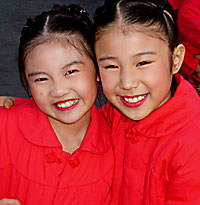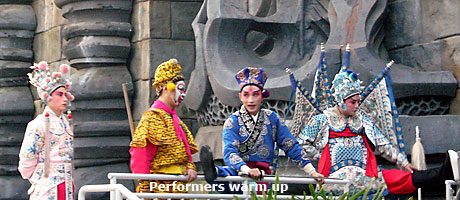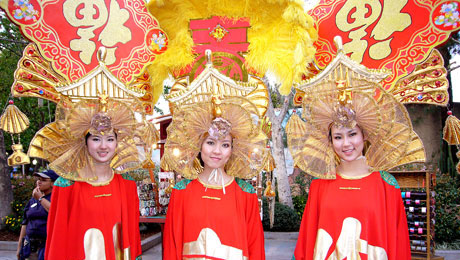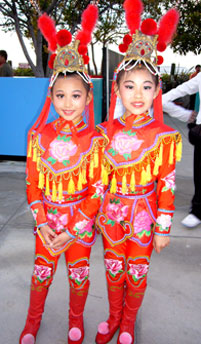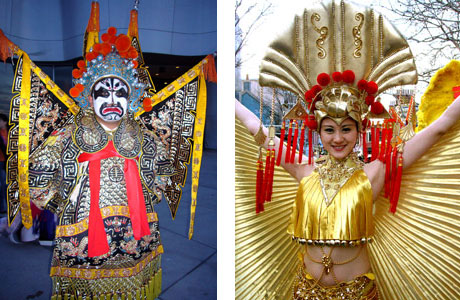Competition was fierce ? the Chinese performers were up against Mummies, Dinosaurs, 4-D Ogres and Time Travelers, but the fantastic costumes and bright colors of Universal?s Chinese New Year event nevertheless drew crowds of curious onlookers. These ambassadors of multiculturalism were there to ring in the Year of the Pig. Though to Westerners this animal may not sound very auspicious, in Chinese culture, the pig is associated with fertility and virility. According to the Chinese zodiac, children born in the year of the pig will be happy, patient and honest.
Beijing-based dancers, acrobats, stilt walkers, singers and artists celebrated the traditional Chinese Lantern Festival at Universal Studios Hollywood as ?The Entertainment Capital of L.A.? and Beijing Tourism Administration joined in a festive observance of the Lunar New Year on Saturday, March 3 from 4:00-6:00 PM.
The two-hour visual spectacle of over fifteen different performances on several stages throughout the park represented traditional Chinese cultural values such as ?Harmonious Family,? ?Harmonious Society? and ?Harmonious World.?
Highlights of the event included performances by The Beijing Opera Troupe, the stilt-mounted dancers of The Beijing District Stilt Performers, the intricately designed ?Floating Forbidden City? costumes of the Xiao Dan Art Performing Group, and the young artists of the Blue Sky Kindergarten Chorale singing ?Hello, Los Angeles.?
Middle school students from the Beijing Normal University demonstrated traditional Chinese folk dance using symbolic red ribbons to ward off evil spirits that may appear during the New Year?s Eve celebration. Beijing Art School students, dressed in ethnically-inspired costumes, performed the ?Minority Nationality Dance? and a group of women from Beijing?s Chaoyang District put on a traditional Fan Dance.? In addition, the Beijing Xicheng Children?s Palace performed signature dances from the Beijing Opera Dance Company.
Another central component of the event was an appearance by ?Fuwa,? the Five Olympic Ring Mascots of the Beijing 2008 Olympic Games.? The ?Fuwa? display employed young performers to embody the characteristics of China?s four most popular animals: the fish, the panda, the Tibetan antelope and the swallow, along with the Olympic Flame.? In the ancient culture of China, there is a tradition of spreading blessings through signs and symbols.? Following this tradition, this set of five mascots was created for the Beijing 2008 Olympic Games, formerly known as the ?Five Friendlies?. Each mascot represents a different color of the Olympic rings and symbolizes a different blessing. Together they carry a message of friendship and peace.
Each of Fuwa has a rhyming two-syllable name — a traditional way of expressing affection for children in China. Beibei is the Fish, Jingjing is the Panda, Huanhuan is the Olympic Flame, Yingying is the Tibetan Antelope and Nini is the Swallow. When you put their names together — Bei Jing Huan Ying Ni — they say “Welcome to Beijing.”
